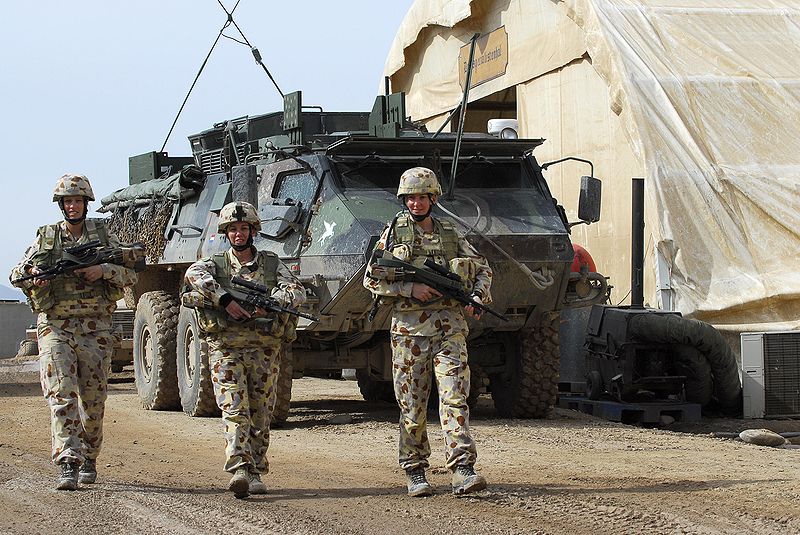
Australian female soldiers on patrol in Afghanistan / Australian Department of Defence
The story seems too good to be true, at least for this old (female) salt: a truly gender-neutral military, based on capabilities and not gender!
Wow. But here’s the catch…gender norms are still being applied, and the same old anti-women-in-combat arguments are surfacing:
If I see that it’s a woman on the receiving end of my rifle scope, I don’t think I could pull the trigger.
Um…you wouldn’t be shooting at your own troops, meathead.
The enemy is the enemy, male or female, and the enemy certainly has shown no reticence in using women as suicide bombers and for harboring terrorists.
The American public will not like to see their daughters come home in body bags.
Women are already coming home in body bags, and have been for years. Nobody wants their daughter, or their son, to come home in a body bag, but that is something that the people who join the military understand as a possible conclusion to their lives…the ultimate sacrifice for their country. Of course, we would prefer, as General Patton once said, to make the enemy give his (and her) life instead.
In that Associated Press article, there was some concern about “whether troops and the public are ready for women to serve in combat roles. An influential security think-tank warns that it could inflict heavy casualties on Australia’s women warriors.”
I would like to know which “influential think tank” came up with the empirical evidence for this statement? I don’t think the public really cares if women serve in combat roles…especially if they are capable. They’re already are doing so in practice, if not in policy.
I like the fact that the Australian government is “devising a series of tests to determine whether an individual soldier is physically capable of coping with combat conditions regardless of gender…”
There has been no suggestion that those requirements would be reduced, but it is estimated that less than 3% of the women volunteers would be able to pass the tests. This we do not know, however, since women are not allowed to volunteer, and thus not allowed to fail. And fail they might, but at least they were able to try.
Australia also announced that “women sailors will be allowed to bunk with men in submarines. Previously women had to sleep in female-only six-berth cabins. The shift will enable more women to fill a shortage of submariners by allowing more flexibility in assigning crews.”
Australia was at the forefront of allowing women in submarines, going as far back as the late 1990s. When using the Australian submarine experience as an example for the American submarine force, the response was to ridicule the mission of the Australian navy as not as important as ours, thus pooh-poohing the experience.
Note the change in policy was due to allowing more flexibility in crew assignments, something that regularly happens when “needs of the navy” overtakes gendered assumptions. We Americans would be better served if our military were less arrogant and more open to using other’s experiences as lessons learned.
Like us, the Australian military allows women to pilot attack helicopters and fighter jets. Also, like us, the positions closed to them include infantry, parachute (i.e. airborne), commando (i.e. Special Forces), artillery, tank and armored cavalry. It is time to have a rubric for entry into the military’s ground combat forces: if only 3% of women can make it, fine. If those 3% are motivated, determined, and capable, it will only mean a better fighting force. Let’s stop focusing on what history tells us women should not do, and focus instead on what the future says they can do.


